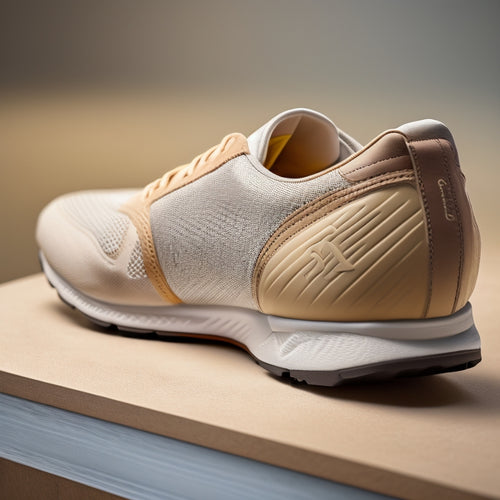
Orthotic Dance Shoes: Supporting Your Dance Journey
Share
Understanding the Need for Orthotic Dance Shoes
Orthotic dance shoes are specially designed to provide additional foot support for dancers with specific foot conditions. While dancing can be an exhilarating form of exercise and self-expression, it may place considerable demands on the feet. Proper footwear can significantly alleviate discomfort and prevent further injury. In this article, we explore the benefits of orthotic dance shoes, the common foot conditions they cater to, and how to find the right pair for your specific needs.
Why Choose Orthotic Dance Shoes?
The importance of proper footwear for dancers cannot be overstated. Orthotic dance shoes provide essential support, cushioning, and stabilization for dancers who may be prone to foot injuries or are experiencing discomfort due to existing conditions. Wearing the right pair of shoes can help alleviate pain, reduce fatigue, enhance performance, and promote overall foot health. The necessity for custom support in dance shoes can be seen in the following advantages:
- Arch Support: Orthotic dance shoes are designed with built-in arch support to help distribute the body’s weight evenly and reduce pressure on the feet.
- Heel Cushioning: Additional cushioning in the heel helps absorb shock and minimizes discomfort during rigorous dance routines.
- Forefoot Padding: Extra padding in the forefoot area can alleviate pressure on the ball of the foot, providing additional comfort and stability during dance movements.
- Adjustability: Many orthotic dance shoes are equipped with adjustable straps or laces for a customized fit and optimal support.
Common Foot Conditions that Benefit from Orthotic Dance Shoes
There are several specific foot conditions that orthotic dance shoes can provide additional support for:
- Plantar Fasciitis: A common cause of heel pain, plantar fasciitis can be alleviated by properly supporting the arch and cushioning the heel through orthotic footwear.
- Flat Feet: Dancers with flat feet may require shoes with additional arch support to help stabilize the foot and prevent overpronation.
- High Arches: High arches can lead to excessive strain on the muscles and ligaments of the foot. Orthotic dance shoes can provide targeted support and cushioning to alleviate discomfort.
- Hammer Toes: Dancers with hammer toes, a condition where one or more toes are curled downward, may need shoes with a wider toe box for improved comfort and support.
- Metatarsalgia: This condition, characterized by pain in the ball of the foot, can be effectively managed with dance shoes that provide ample forefoot cushioning.
How to Choose the Right Orthotic Dance Shoes for Your Needs
Choosing the right pair of orthotic dance shoes involves considering a number of factors. We will outline various aspects to keep in mind when selecting the perfect dance shoes for your specific needs:
- Foot Assessment: Consult with a podiatrist to evaluate your foot condition and determine the type of support you require.
- Proper Fit: Ensure that the shoes fit snugly, but have enough room for your toes to move comfortably.
- Finding the Right Style: Dance styles can vary greatly, so make sure to choose shoes that provide the necessary support and allow for proper movement based on your preferred style.
- Quality Materials: Opt for shoes made with high-quality, durable materials that provide adequate breathability and support for extended wear.
- Professional Advice: Seek guidance from your dance instructor or a knowledgeable shoe retailer to help with your selection.
Conclusion: Prioritizing Foot Health in Dance
Taking care of your feet as a dancer is crucial for maintaining overall foot health and ensuring optimal performance. Orthotic dance shoes play a significant role in supporting your feet and providing the necessary comfort to enjoy dancing while mitigating the risk of injuries. By understanding the benefits of orthotic footwear, identifying common foot conditions that can be alleviated with the right shoes, and choosing appropriately based on your needs, you can confidently continue to enjoy your passion for dance and maintain excellent foot health.
Related Posts
-

Why Heel Counters Are Important for Foot Support
Heel counters are essential for your foot support, enhancing stability and reducing injury risk during movement. They...
-

Dance Poster Showcases Array of Dance Styles
In addition to showcasing a diverse array of dance styles, dance posters provide a visually engaging tool for cultura...
-

Unleash the Secrets of Shinobi: Genesis Manual
The Shinobi: Genesis Manual is a treasured resource for enthusiasts, offering an in-depth exploration into the intric...


